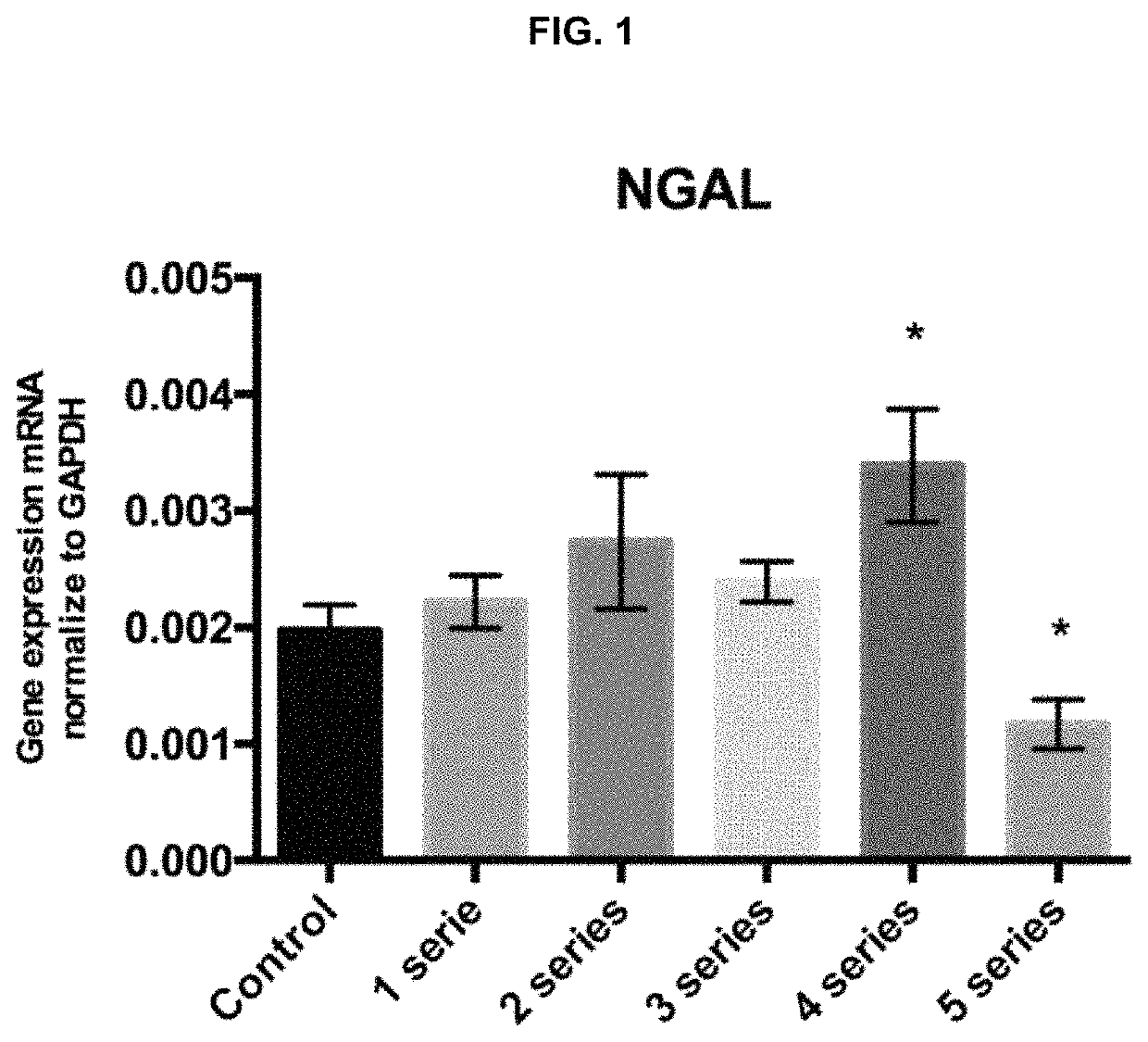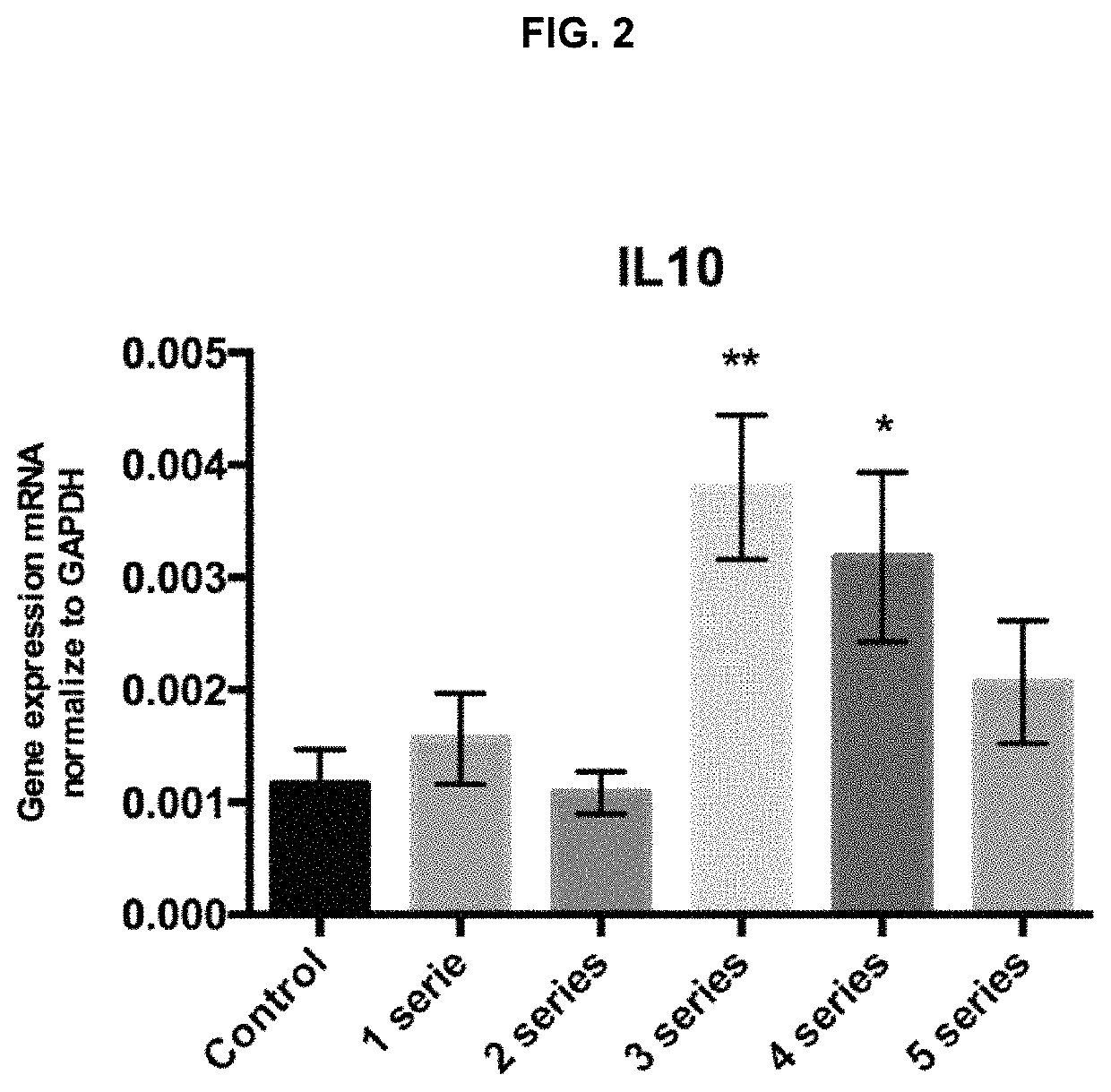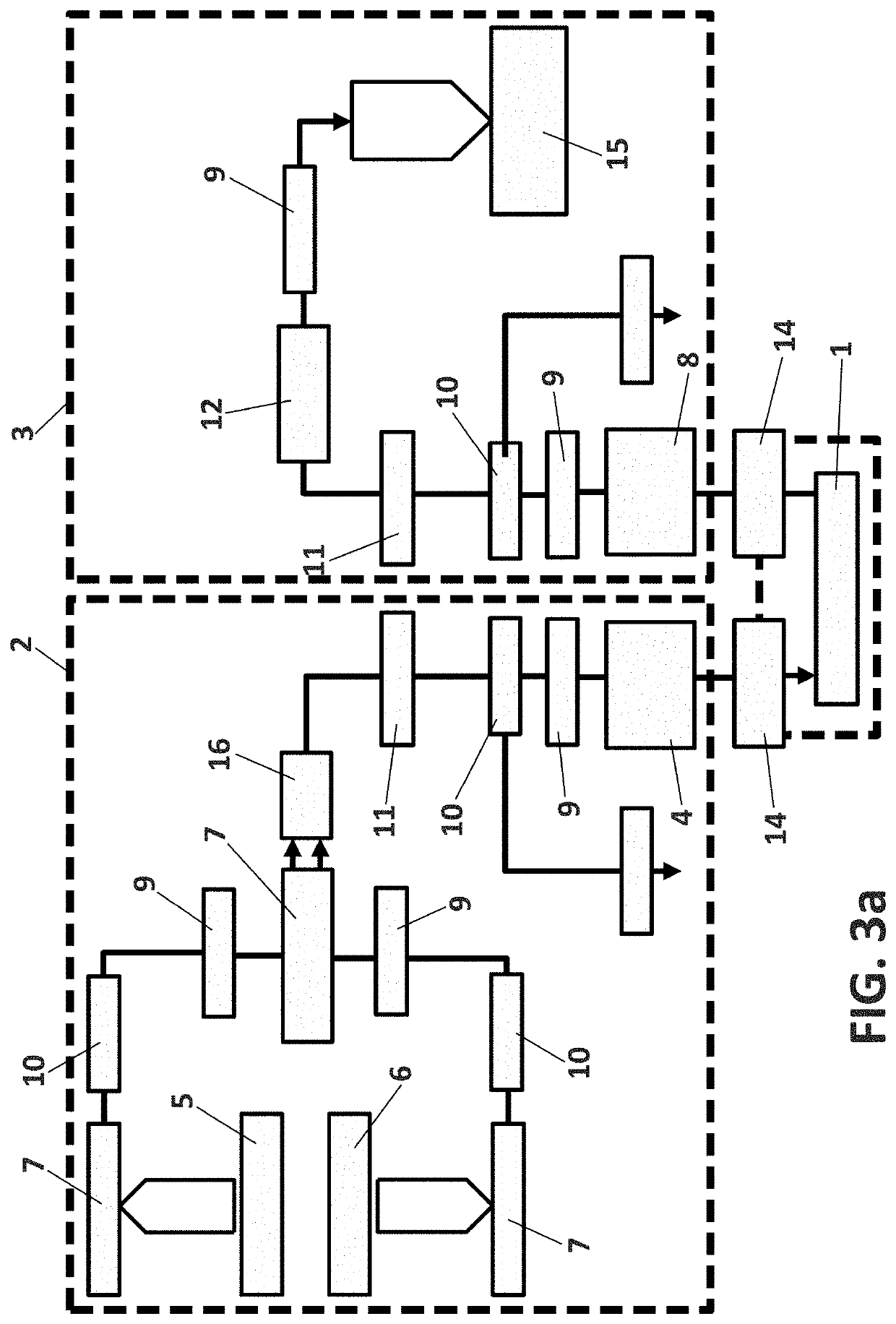Cell therapy with polarized macrophages for tissue regeneration
a cell therapy and macrophage technology, applied in the field of cell therapy with polarized macrophages for tissue regeneration, can solve the problems of limited success of physiotherapy for treating musculoskeletal injuries, inability to accelerate the healing process and reduce scar formation,
- Summary
- Abstract
- Description
- Claims
- Application Information
AI Technical Summary
Benefits of technology
Problems solved by technology
Method used
Image
Examples
example 1
Effects of Short Periods of Anoxia-Reoxygenation on the Polarization of Peritoneal Macrophages
1.1. Objective.
[0090]The goal was to assess if the exposure of the macrophages to 1, 2, 3, 4 or 5 anoxia-reoxygenation series (3′anoxia-45″ reoxygenation) promotes the polarization of macrophages to an M2 phenotype, with an increase in NGAL and IL10 expression compared to the control subjected to standard incubation conditions.
1.2. Experimental Design.
[0091]a. Control group under oxygen standard conditions (CO2 5% plus atmospheric air).
[0092]Peritoneal macrophages were extracted and isolated from six mice and cultured during 24 h under standard conditions.
[0093]b. Groups subjected to 1, 2, 3, 4 or 5 anoxia (nitrogen 95%; CO2 5%; O2 0%).-reoxygenation series plus 1 h and 30 min of reoxygenation.
[0094]Peritoneal macrophages were extracted and isolated from six mice and cultured during 24 h under standard conditions. Then, macrophages were subjected to 1, 2, 3, 4 or 5 anoxia-reoxygenation seri...
example 2
Description of a Preferred Embodiment of the Device
[0113]In FIG. 3A it can be appreciated a diagram of the proposed device for inducing hypoxia and re-oxygenation conditions on isolated macrophages according to the method previously described. In FIG. 3B there is a perspective view of said device.
[0114]As can be seen in said figure, the essential elements of the device are a removable chamber (1) configured to house the isolated macrophages, a first gas conduction circuit (2) and a second gas conduction circuit (3).
[0115]The first gas conduction circuit (2) comprises a first removable connection (4), which is preferably a stopcock, to the removable chamber (1) and a first gas source (5) and a second gas source (6). The first and second gas sources (5, 6) are connected to an electrovalve (7) which is configured to select the gas source from which the gas passes to the removable chamber (1).
[0116]The first gas conduction circuit (2) can also comprise a press sensor (16) placed between...
example 3
In Vivo Therapy for Treating Injured Tissue
3.1. Experimental Design and Procedure.
[0137]a. Mice without injury (Control)
[0138]b. Mice with an injury not treated
[0139]c. Mice with an injury treated with an in vivo ischemia reperfusion protocol (PREC)
[0140]d. Mice with an injury treated with an in vivo ischemia reperfusion protocol (PREC)+M2 macrophages
[0141]An injury in the mice leg muscle was performed by laceration using a 5 mm diameter biopsy.
After 48 h
[0142]Peritoneal macrophages were extracted and isolated from mice (d) and polarized to an M2 phenotype using the procedure described in example 1.
[0143]The legs of mice (c) and (d) were surrounded with a plastic track above the twin. Once it is well caught, it begins to tighten to make it a restriction of the flow during 3 minutes. After this period the track is released and the blood flow was recovered during 45 seconds. Afterwards the same ischemia reperfusion process was repeated 2 times.
[0144]After the PREC protocol, M2 macroph...
PUM
| Property | Measurement | Unit |
|---|---|---|
| time | aaaaa | aaaaa |
| time | aaaaa | aaaaa |
| diameter | aaaaa | aaaaa |
Abstract
Description
Claims
Application Information
 Login to View More
Login to View More - R&D
- Intellectual Property
- Life Sciences
- Materials
- Tech Scout
- Unparalleled Data Quality
- Higher Quality Content
- 60% Fewer Hallucinations
Browse by: Latest US Patents, China's latest patents, Technical Efficacy Thesaurus, Application Domain, Technology Topic, Popular Technical Reports.
© 2025 PatSnap. All rights reserved.Legal|Privacy policy|Modern Slavery Act Transparency Statement|Sitemap|About US| Contact US: help@patsnap.com



